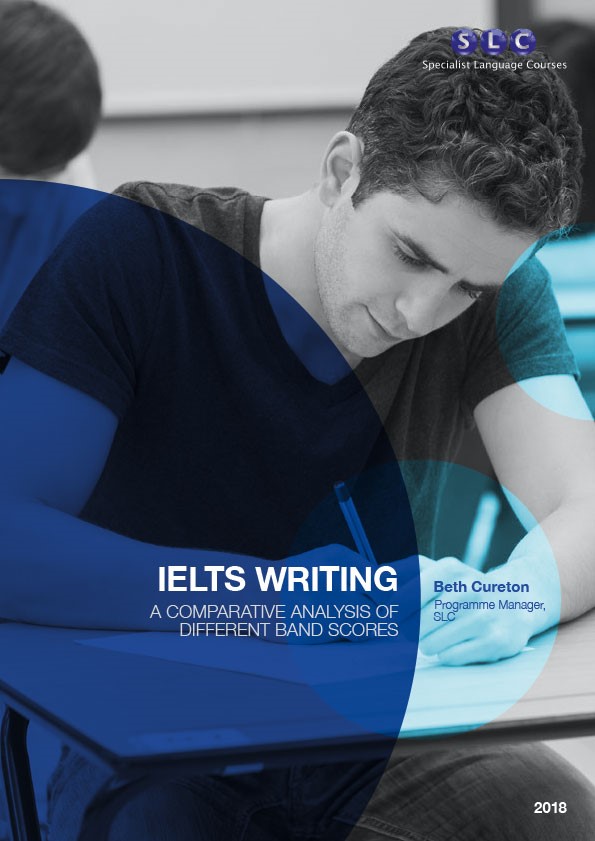Academic IELTS for international nurses
At the beginning of 2016, the NMC introduced a new regulation which required all nurses from outside the UK to achieve a score of 7.0 or above (out of 9.0) in all four areas of the Academic IELTS exam - reading, listening, writing and speaking – in order to obtain a license to practise as nurses in the UK. The purpose of this was to address concerns over patient safety in relation to the ability of overseas nurses to communicate effectively in English.
What does the IELTS Writing test consist of?
The Academic IELTS Writing paper requires candidates to write two texts in one hour. The first is a detailed summary of data represented by a graph, chart, map, table or flow diagram, covering topics from the life cycle of bees to the changes in a town map over 20 years. The second is a discursive essay on anything from climate change to art to tourism to space exploration. A score of 7.0 on this Writing paper requires test takers to write in an academic style, using low-frequency vocabulary relating to this wide range of topics as well as long, complex, sentence structures.
The challenge of achieving 7.0 in Writing
SLC have worked and continue to work with NHS Trusts, preparing groups of overseas nurses to achieve the IELTS scores required by the NMC. We have come across many nurses who were deemed excellent communicators at work by their native-speaking colleagues and managers and were able to achieve 7.0 or above on the IELTS Reading, Listening and Speaking tests. However, they found they were stuck at 6.5 on the Writing paper, repeatedly failing to achieve 7.0. As a result, these qualified nurses were prevented from using and developing their nursing skills, and NHS hospitals continued to be chronically understaffed.
Moving from 7.0 to 6.5 in Writing
Towards the end of 2018, the NMC made the decision to reduce the required level in the Writing paper of the Academic IELTS test from 7.0 to 6.5. Consequently, the nurses who had been working in the UK below their skill level as Health Care Assistants for months or years and had attempted the Academic IELTS exam again and again were finally able to practise and alleviate staff shortages on their wards.
Researching the difference between 6.5 and 7.0 Writing
As part of an Open University degree module on Systemic Functional Linguistics, Beth Cureton, Programme Manager at SLC, carried out a piece of research on the lexicogrammatical differences between IELTS essays which scored a 5.5, 6.5 and 7.0. The aim was to understand the differences in the language required at the different levels of Academic IELTS Writing test and was driven by Beth’s background both as an IELTS teacher and then as manager of multiple IELTS preparation programmes at SLC.
While the results would inform course and materials design at SLC, the timing of the research also coincided with the NMC decision and so provides a strong analysis of the appropriacy of that decision.
The results
The research analysed candidates’ written answers by looking at quantifiable linguistic features, such as lexical density, structure and sentence complexity. The papers scoring a 5.5 clearly showed measurable weakness in these features when compared to an essay scoring 6.5 or 7.0.
However, more surprisingly, the essays scoring 6.5 and 7.0 were very similar when assessed using these criteria. There were no distinct differences that could be found to articulate why one essay was marked at 6.5 and another at 7.0. It appeared therefore that the key factor determining whether a text was scored 6.5 and 7.0 was not how soundly written a text was.
This suggests that the difference between an IELTS exam marker giving a score of 6.5 and 7.0 may be subjective and may vary from marker to marker. This may be based on how well the marker felt the candidate used nuance and expression, for example, or on how effectively the title in the discursive essay was addressed. More research would be needed to confirm the impact of these qualitative differences, but the research gives an initial indication that the significance is not relevant in the decision whether or not to allow a nurse to practise in the UK.
Conclusions for overseas nurses
In terms of how the scores demonstrate the ability of overseas nurses to work in the UK, as the linguistic quality of the writing appears very similar at 6.5 and 7.0, this clearly supports the decision of the NMC to reduce the Writing score to 6.5.
Given the many nurses who achieve 7.0 or more in the other three papers, this also indicates that requiring nurses to combine these scores with 6.5 in Writing is a sensible and justifiable decision. This is further supported by consistent evidence from healthcare employers and managers on the one hand and the English language teaching professionals preparing candidates on the other that these nurses are ready to join the NHS workforce.
Read the full IELTS writing report by SLC here.







